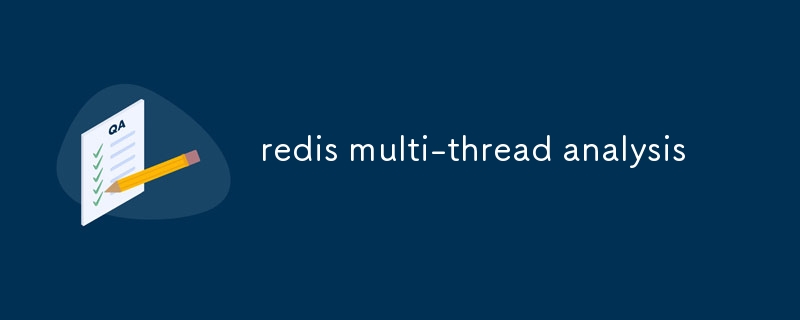Home >Web Front-end >Front-end Q&A >redis multi-thread analysis
redis multi-thread analysis
- DDDOriginal
- 2024-08-15 16:05:21695browse
This article explores the impact of Redis multi-threading on performance, focusing on the impact of overhead and optimization methods, such as isolating hot data, using non-blocking I/O and managing multi-threading in a cloud environment.

Redis multi-thread analysis
What impact does Redis multi-thread analysis have on Redis performance?
Redis Multithreading can have a complex impact on Redis performance. On the one hand, it can improve concurrency, allowing Redis to handle requests from multiple clients at the same time. On the other hand, multithreading also introduces overhead, such as thread creation, scheduling, and context switching. In high-concurrency and high-contention scenarios, thread overhead may offset the concurrency improvements brought by multi-threading, or even lead to performance degradation.
Redis multi-thread analysis How to optimize Redis performance under multi-threading?
Some ways to optimize Redis performance under multi-threading include:
- Reduce the number of threads: Allocating too many threads to Redis can lead to resource waste and contention. Avoid excessive number of threads by fine-tuning the thread pool size.
- Isolate hotspot data: Store hotspot data in different Redis instances to reduce thread contention.
- Use non-blocking I/O: Redis supports non-blocking I/O, which can minimize thread blocking during I/O operations.
- Use Pipeling and Transactions: These techniques can reduce overhead by reducing the number of round trips between the client and server.
Redis multi-thread analysis How to manage Redis multi-threading in a cloud environment?
Some of the following considerations are important when managing Redis multithreading in a cloud environment:
- On-Demand Scaling: If the load on your Redis instance is predictable, consider using On-Demand Scaling to dynamically adjust the instance as needed The number of threads.
- Multiple Availability Zone Deployment: Deploying Redis instances in multiple Availability Zones can prevent performance degradation caused by a single Availability Zone failure.
- Use Redis Cluster: Redis Cluster is a distributed Redis deployment that provides higher availability and scalability.
The above is the detailed content of redis multi-thread analysis. For more information, please follow other related articles on the PHP Chinese website!

